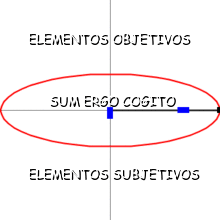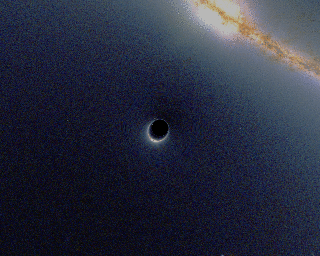Military Escalation:
"Phase Two" of the War on Libya
by Prof. Michel ChossudovskyGlobal Research, June 1, 2011
"An unprecedented deployment of naval power in the Mediterranean is occurring.
The USS George H W Bush supercarrier, the most advanced vessel in the US naval arsenal, together with its strike and carrier group has entered the Mediterranean, to join up with the Sixth Fleet in Naples.
Aircraft supercarrier USS George H W Bush (CVN77) is the World's largest naval vessel: with "four-and-a-half acres of space on its flight deck, making it capable of housing 90 jets and helicopters. It is home to 5,500 crew". Equipped with sophisticated electronic warfare systems, it is the World's largest "mobile military base" (Manlio Dinucci, "Boots on the Ground": Sarkozy and Cameron Prepare to Land in Libya, Global Research, May 31, 2011).
The USS George H.W. Bush Carrier Strike Group was sent on its "maiden voyage" to the Sixth Fleet area of naval operations, namely the Mediterranean. It was "certified ready for combat operations" a month before the onset of the war on Libya.
Subduing the Enemy into Total Submission
Military Escalation
Since the beginning of the war on March 19, approximately 10,000 sorties have been conducted. NATO acknowledges a total of 9036 sorties, including 3443 strike sorties over a two month period, (March 31, 2011-May 31, 2011).
With the deployment of the USS George H. W. Bush and its Strike Carrier Group together with other allied warships, a new stage of the war is unfolding.
Military operations are no longer limited to a high altitude bombing campaign, where strike targets are "pre-approved" and planned in advance. The deployment of helicopters and low altitude air operations are envisaged. The latter are to support the deployment of US-NATO commandos and rebel forces on the ground.
Britain's HMS Ocean deployed out of Cyprus, is equipped as a Helicopter Carrier, for Apache helicopters.
The Apaches would be dispatched from HMS Ocean, Britain's largest warship. In mid-May, naval exercises were held off the coast of Cyprus involving British and Dutch navy warships with HMS Ocean playing a central role as a helicopter carrier. "The exercise included air defence practice and live firing at sea with amphibious exercises in coastal waters".
In turn, France confirmed that it would be deploying its Tiger attack helicopters.
We can therefore expect in the weeks to come a major shift in the nature of military operations; the sending in of commandos in support of land operations, with helicopters and low altitude air deployments playing an important role. (These low altitude flights would not be limited to predator drones).
The nature of air operations will, therefore, become more focussed. The stated objective is "to bring the air campaign closer to the ground". The USS GNWB supercarrier and strike group will play a key role in the implementation of the next phase of the war.
Simulating the Mediterranean War Theater: The "Saxon Warrior" War Games
In the week prior to its "maiden voyage" to the Mediterranean, the USS H. W. Bush (CVN77) together with its Carrier Strike Group 2, took part in extensive war games off the coast of Cornwall (UK) under the auspices of HM Royal Navy (19-26 May 2011).
Dubbed "Exercise Saxon Warrior", the war games were carried out in a maritime environment, with the participation of British, US, French, German, Swedish and Spanish war ships. All in all, the war games involved the participation of 26 separate naval units. ( EGFE Movements » Exercise Saxon Warrior).
Of significance, the "Saxon Warrior" is among the largest war games conducted by the Royal Navy, in close liaison with the US Navy, NATO and the Pentagon:
"[They are] intended to hone the skills of the Bush Carrier Strike Group... so it can work smoothly with European forces during its current deployment. [in the Mediterranean against Libya ((M.C.)]
“The George H W Bush Strike Group is well prepared for this deployment,” said Rear Admiral Nora Tyson, the task group commander – and the first female admiral of a US carrier force.
“We’re delighted to be participants in Saxon Warrior. It provides an ideal opportunity for all the ships in the group to enhance our ability to operate seamlessly and effectively with other NATO units.” ( George Bush bound for Portsmouth after war games with Royal Navy navynews.co.uk, emphasis added)
The war games bear a direct relationship to the "real war". The Saxon Warrior simulated both the multi-national command structure as well as the naval configuration of the NATO led war in the Mediterranean, i.e. in terms of naval, air force, helicopter deployment and possible ground force operations. The 5500 sailors on board the USS George H. W. Bush are intended to be used in the case of commando landings on enemy territory:
[The Saxon Warrior is] "an exercise designed to develop theater-specific combat skills as well as enhance cooperation between multi-national forces and government agencies. ... Saxon Warrior presents a myriad of challenges to the multi-national and multi-platform force by creating a diverse and unpredictable war environment based on fictional geo-political and military scenarios." (George H.W. Bush Strike Group Participates in Saxon Warrior, http://www.navy.mil/search/display.asp?story_id=60543, emphasis added)
While conducted under the auspices of the British Navy, low flying military aircraft and helicopter exercises were also undertaken in South West England and parts of Wales, simulating conditions in a fictitious enemy country. The focus on helicopter and low altitude air operations is fully consistent with the next stage of the war on Libya (as discussed above).
The "Saxon Warrior" war games are viewed by the US military as providing "an opportunity, as a deployed force, to integrate coalition partners into our command structure and that is happening for the first time," (Capt. Patrick. O. Shea, USS Gettysburg commanding officer, .Military News: Gettysburg Participates in Saxon Warrior, May 24, 2011).
While The Royal Navy coordinated the war games, the US naval force, in terms of military deployments and "simulated command structures" was by far the key player.
The eight-day exercise involved "single-mission" stand-alone scenarios "encompassing surface, submarine, and air combat". The last day on May 26 culminated "with a simulated war" in a maritime environment.
While based on "fictional" geopolitical and military scenarios, the participants in "Saxon Warrior" were acutely aware that they were training for the war on Libya:
"We are training in a deployed operation, so it improves our readiness should we become involved in any real world operations." (Ibid, emphasis added)
Saxon Warrior presents an opportunity to face a variety of geopolitical situations that change from day to day, ...
“Saxon Warrior gives us a challenging environment in which to use our war fighting skills,” “We have to think quickly outside the box. The more agile we are, the more prepared we’ll be for any mission that comes up during deployment. That’s the beauty of Saxon Warrior.”
"The beauty of operating with coalition partners is that we practice with them, learn their strengths and then blend those strengths together to make the most potent coalition force possible.” George H.W. Bush Strike Group participates in Saxon Warrior 11 .norfolknavyflagship.com, May 26, 2011, emphasis added)
The Anglo-American Military Axis
These war games are part of a framework of advanced military co-operation between London and Washington, involving the de facto integration of British and US command structures. The war games had been scheduled to coincide with President Barack Obama's official State visit to the UK, highlighted as a "Special Relationship" between Britain and America.
Of significance, the high level meetings between President Barack Obama and Prime Minister David Cameron were conducive to the formal establishment of a joint National Security Board, with an mandate to coordinate military decision-making as well as foreign policy. Headed by the U.S. and British national security advisers, the joint National Security Board seeks to further consolidate the Anglo-American military axis.
The Next Phase of the War on Libya
What is unfolding is an escalation of military operations, which at the same time is leading to a protracted war.
This shift in the direction of military operations geared towards aerial and helicopter support to "boots on the ground" commandos will not necessarily lead to an all out invasion, at least in the foreseeable future.
The USS H. W. Bush and its joint carrier group will be playing a key role in supporting ground operations through helicopter and low altitude air sorties.
"The Aircraft Carrier George H.W. Bush is flanked by a battle group consisting of the guided missile destroyers Truxtun and Mitscher, the missile cruiser Gettysburg and Anzio and eight squadrons of aircraft. It’s going to strengthen the Sixth Fleet, whose command is in Naples, alongside other units, including the nuclear submarines Providence, Florida and Scranton. Also added to the Sixth Fleet was one of the most powerful amphibious strike groups, led by the USS Bataan, which alone can land more than 2,000 marines, equipped with helicopters and vertical takeoff planes, artillery and tanks. It is flanked by two other amphibious assault ships, the Mesa Verde and the Whidbey Island, which from May 13-18 visited Taranto in Italy. The Whidbey Island has four huge air cushion landing crafts that, within a radius of 300 miles, can deliver 200 men at a time very quickly to the coast of a country without the ship being visible from land. (Manlio Dinucci, "Boots on the Ground": Sarkozy and Cameron Prepare to Land in Libya, Global Research, May 31, 2011)
Special Forces have been on the ground in Libya since the onset of the air campaign.
Mercenary forces on contract to NATO are also being deployed. (See Manlio Dinucci, A Secret Army of Mercenaries for the Middle East and North Africa, Global Research, May 24, 2011).
"Shock and Awe"
As part of a "Shock and Awe" strategy, bunker buster BLU 109 2000 pounds bombs are to be dropped on Libya using Britain's RAF tornado fighter jets. Shock and Awe is part of the "doctrine of rapid dominance" or "decisive force", used to intimidate the adversary into submission, as well terrify the civilian population. (see video clip below)
Nuclear Weapons against Libya
It is worth noting that the use of Shock and Awe tactical nuclear weapons against Libya has been contemplated as part of this "humanitarian war". In 1996, Libya was the "chosen country" in the Middle East and North Africa to be targeted with a B61-11 tactical nuclear weapon. The latter is a bunker buster bomb equipped with a nuclear warhead.
The plan to nuke Libya was never scrapped. Of utmost significance, shortly after the commencement of the bombing campaign on March 19, the Pentagon ordered the testing of the functionality of B61-11 nuclear bomb. These tests were conducted using the same B2 Stealth Bombers, out of the same US military base in Missouri, which were used to coordinate the B2 Stealth bombing raids on Libya at the outset of the war on March 19. (See Michel Chossudovsky, Dangerous Crossroads: Is America Considering the Use of Nuclear Weapons against Libya? Global Research, April 7, 2011)
These various developments point to a dangerous process of military escalation, which could potentially extend beyond Libya's borders. The broader economic and geo-strategic implications of this war are far-reaching."







































































































































































































































































































































































































































